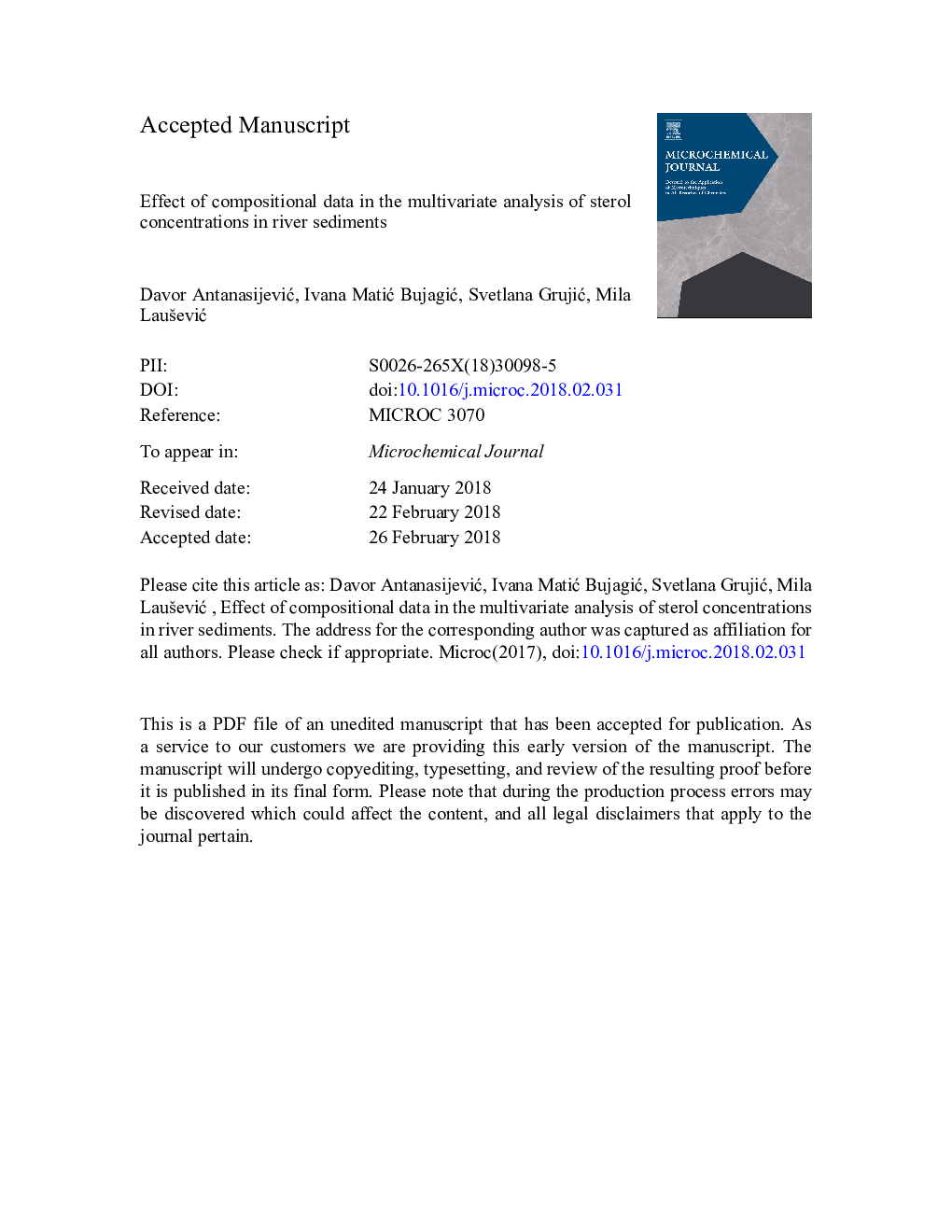| Article ID | Journal | Published Year | Pages | File Type |
|---|---|---|---|---|
| 7640742 | Microchemical Journal | 2018 | 19 Pages |
Abstract
In this paper, multivariate analysis of sterol concentrations detected in river sediment samples was performed. In order to remove co-dependence of values, concentrations of sterols were transformed using centered log-ratio (CLR) transformation. The main objective of the work was to point out the damaging effects of working in the wrong geometry on the principal component analysis (PCA) assessment of sterol pollution. In order to determine if the dimension lost have effect on the principal component analysis of sterols in sediments, we have performed the PCA using raw and log-ratio transformed sterol data. Additionally, two rounded zero replacement approaches, i.e. a simple-substitution method (DL/2, 0.55DL and DL/â2) and multiplicative replacement strategy (0.65 DL), were compared in order to determine if the replacement values have an effect on PCA results and conclusions. Relevant differences were noted by comparing the results of the principal component analysis obtained with raw data and log-ratio transformed sterol data. Only the PC loadings obtained from the CLR PCA allowed the clear distinction between human-sourced pollution and biogenic sources of sterols, whereas in the case of PCA with raw data loadings were all grouped almost in a single quadrant. For the small proportion of rounded zeros (not more than 10%), two different replacement approaches did not have any effect on transformed PCA output. The results presented in this work have shown that the effect of “closure” in the sterol data can be easily observed from the PCA biplot, and that it obstructs the evaluation of human contribution to pollution of river sediments. Therefore, prior to the PCA, sterol concentrations must be CLR transformed in order to perform a reliable assessment of the sewage contamination.
Keywords
Related Topics
Physical Sciences and Engineering
Chemistry
Analytical Chemistry
Authors
Davor AntanasijeviÄ, Ivana MatiÄ BujagiÄ, Svetlana GrujiÄ, Mila LauÅ¡eviÄ,
